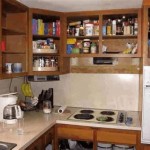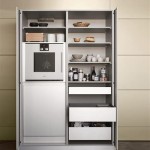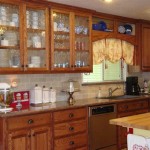Cutting Kitchen Cabinets: Essential Aspects to Consider
Cutting kitchen cabinets is a crucial aspect of remodeling or installing new cabinetry in your kitchen. It requires careful planning and precision to ensure the cabinets fit seamlessly and function properly. This article explores the essential aspects of cutting kitchen cabinets, providing valuable insights to guide you through this process.1. Measure Accurately
Precise measurements are paramount in cutting kitchen cabinets. Use a tape measure or laser level to accurately determine the lengths and heights of the cabinets. Measure the width of the space where the cabinets will be installed, including any obstacles such as walls, appliances, or pipes.
2. Choose the Right Cutting Tool
The choice of cutting tool depends on the material of the cabinets. For solid wood cabinets, a circular saw or a miter saw is suitable. For laminated particleboard or MDF cabinets, a jigsaw or a utility knife may suffice. It's important to select a tool that provides clean and precise cuts.
3. Establish a Stable Cutting Surface
A stable cutting surface ensures accurate cuts and prevents damage to the cabinets. Use a sawhorse or worktable to support the cabinet while cutting. Secure the cabinet to the surface using clamps or a non-slip material to prevent it from moving.
4. Cut with Care and Precision
Align the cutting tool along the marked lines and cut carefully. Use smooth, controlled strokes and avoid applying excessive pressure. Hold the tool firmly and keep a steady hand to ensure clean and accurate cuts.
5. Sand and Finish the Cuts
After cutting, sand the edges of the cabinets to remove any splinters or rough edges. Use fine-grit sandpaper and smooth the cuts until they are flush and uniform. Apply a sealant or primer to the cut edges to protect them from moisture and wear.
6. Assemble and Install the Cabinets
Once the cabinets are cut, it's time to assemble and install them. Follow the manufacturer's instructions carefully, ensuring that the cabinets are properly aligned and secured. Use levelers or shims to ensure that the cabinets are level and stable.
### Conclusion Cutting kitchen cabinets requires precision and attention to detail. By considering the essential aspects discussed in this article, you can achieve precise cuts, ensuring that your cabinets fit flawlessly and function optimally. Whether you're a DIY enthusiast or a professional contractor, understanding these aspects will guide you towards a successful cabinet installation project.
Cutting Down A Few Cabinet Doors To Fit Young House Love

From 18 To 12 Cutting Down A Kitchen Cabinet And Doors

Updating Your Kitchen Cabinets A Complete Guide To Cutting And Adding Moldings Lecultivateur

Cutting Down A Kitchen Cabinet To Fit

Cutting Down A Kitchen Cabinet To Fit

10 Simple Kitchen Cabinet Repairs Diy

Cutting Down A Few Cabinet Doors To Fit Young House Love

Updating Your Kitchen Cabinets A Complete Guide To Cutting And Adding Moldings Lecultivateur

Cutting List For Kitchen Cabinets Materials Sketchlist3d

How We Organized Our Kitchen Drawers And Cabinets Jenna Sue Design
Related Posts








